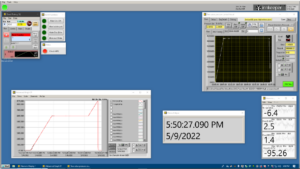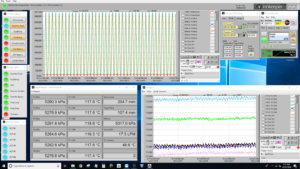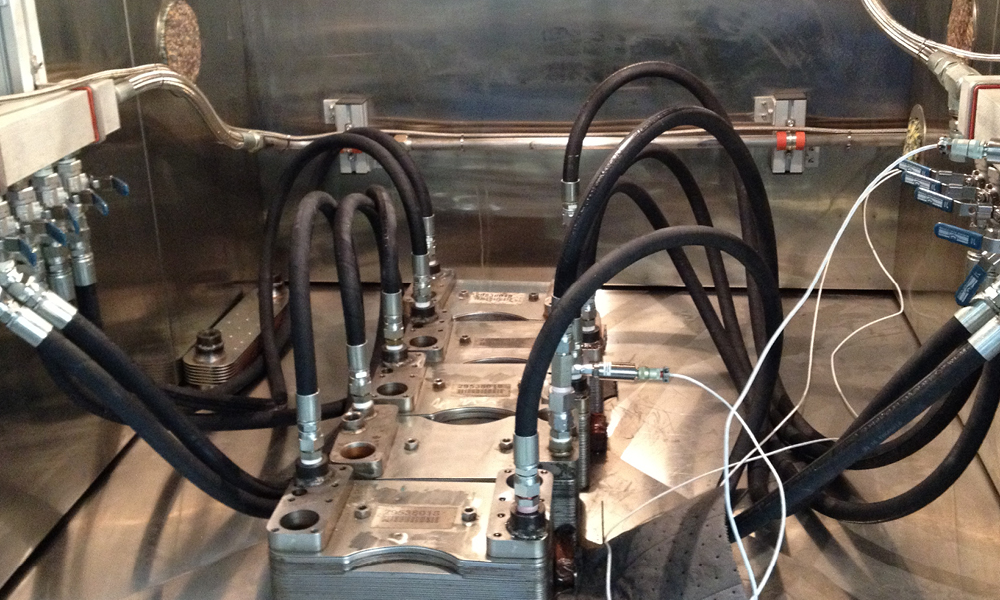Ensuring the integrity and safety of components under pressure is non-negotiable. Whether it’s radiators, heater cores, tanks, brakes, fluid lines or other containment systems, pressure testing is critical in verifying strength and leak-tightness. For companies seeking expertise in this domain Innkeeper stands out, delivering comprehensive pressure testing products tailored to meet the needs of supplier R&D and equipment manufacturers.
Innkeeper LLC has been providing custom engineered test machines since 2007, with our first pressure-controlled rig in 2011. Ever since then, we have been called on for complicated, multi-variable testing using pressure, flow and temperature.
The Role of Equipment Design
Pressure testing is an essential quality assurance process used to verify key quality indicators (KQI) including interconnection and structural integrity, and reliability of equipment when subjected to cyclic loading of pressure and temperature. By subjecting components to operating extremes through controlled application of fluid pressure, flow and temperature, potential weaknesses and design flaws can be identified early in the design and production process. Because there are many nuances to this testing, both the understanding of the test method and control of the parameters are key in selecting the proper machine design. Although there is possible to have more than one “correct” design to a custom pressure testing application, there are always many possible wrong designs. Design decisions that, when requirements are not properly vetted, make the desired solution difficult if not outright impossible to achieve.
There are many different names and styles of pressure tests.
- Hydrostatic Testing: This method involves filling the component with fluid and pressurizing it to a specified value for a minimum duration. It’s highly effective for detecting leaks and evaluating structural integrity.
- Pneumatic Testing: Using air or another gas as the test medium, this method is crucial for systems where liquid (water) contamination must be avoided.
- Pressure Decay and Mass Flow Testing: Various tests allow for the measurement of pressure decay over time to determine if the pressure loss is within tolerance; mass flow techniques maintain constant pressure while measuring the flow rate of the leak.
- Burst Testing: Subjecting a component to increasing and/or cyclic pressure until it fails, this test determines the maximum pressure the system can withstand before rupturing and the impact that temperature/pressure cycling have on longevity.
- Pressure Drop Testing: This method subjects the component to a constant flow and pressure, and monitors the pressure drop across the item by measuring the differential pressure. This can also be called occlusion testing, measuring the constant pressure differential or measuring the air pressure loss over time.
- Pressure Cycle/ Impulse/ Durability/ Fatigue: This method usually requires dynamic control of the actual pressure wave shape running a repeating pattern of pressure (and vacuum) highs and lows, often with additional control over flow and temperature.
- Characterization: This method involves very precise control of pressure and other parameters like flow and temperature. It also involves precise measurement and data acquisition of pressure, flow, temperature, housing deflection and time, among other things.
What is common to all of the different types of pressure test equipment is the design selection process. There are many factors that need to be considered when designing a pressure testing machine, starting with whether it is a static, quasi-static or dynamic pressure requirement and then details of the test specimen characteristics and actual test specifications, simultaneous specimens, simultaneous flow and temperature control…
Pressure Test Equipment Design Considerations
What type of test is it?
Static/Quasi-Static Designs
For instance, if the test requires that the specimen sees a ramp and hold pressure, but doesn’t need to repeat it over and over again, then the primary considerations are
- Specimen volume and material makeup
- Fluid type
- Volumetric expansion under pressure
- Ramp rate and hold period
- Pre-filling and draining the specimen
- Spilt fluid recovery
This type of test is relatively simple and can be done using many different design styles, as long as the required pressure, flow during ramp, and hold accuracy can be met.
For Example: A pump with pressure compensator and solenoid controlled ball valves may be appropriate for this, assuming the required rate of flow and holding accuracies fall in line with component specifications.

- This screen shows an example of a quasi-static pressure test system. Ramp-Hold-Ramp to Fail pressure.
Dynamic Designs
Usually, but not always, these tests will require wave shaping (you would see the wave type spelled out in the spec… sinusoid, trapezoid, triangle…) and repetitive control from the desired maximum pressure down to atmospheric pressure (0psi) or below. Also common is to have other controlled parameters: constant flow during pressure cycle; constant fluid temperature; surrounding air temperature (different than fluid temp). These parameters need to be addressed first, following by the list above for Static test equipment.
- Is this test specified as a dead-headed test (no circulation flow)?
- Is wave shaping required?
- Is flow, fluid temperature and/or surrounding air temperature also to be controlled?
- How many specimens are to be tested simultaneously?
- Specimen volume and material makeup
- Fluid type
- Volumetric expansion under pressure
- Cyclic frequency
- Pre-filling and draining the specimen
- Spilt fluid recovery
For example:
A self contained circuit with closed loop control of cyclic pressure, fluid flow, fluid temperature and a surrounding environmental chamber is required. For repeatably reaching minimum pressures near 0psi, a pressure intensifier would be used to provide precise, repeatable pressure control.

- This screen shows an example of a dynamic pressure test system. Sinusoidal pressure, flow, temperature of 6 specimens is simultaneously controlled.
Tailored for Success
Every project at Innkeeper is approached with a tailored mindset. The team collaborates closely with clients to understand specific needs and design testing procedures that align with your operational goals.
Innkeeper is an experienced integrator and has been building custom test equipment focused on fatigue, durability and performance testing. Our team has worked in test environments and are skilled in the planning and design of reliable systems that support the product development process. The application of our InnControl software suite with data acquisition and integrated components has successfully outfitted numerous automotive, aero and consumer product testing labs. We deliver customer-oriented solutions that provide for the test at hand, and flexibility for future test requirements.
For more information or to discuss your specific needs, visit Innkeeper LLC or contact our team directly. Build your test capacity and ensure the integrity of your systems with Innkeeper’s expert pressure testing equipment.

